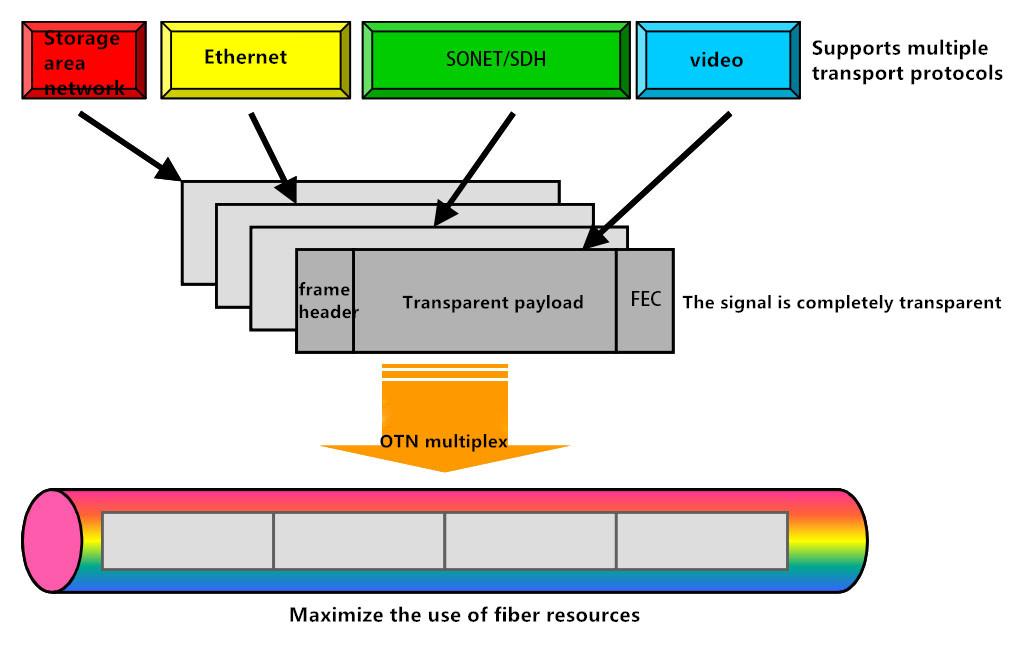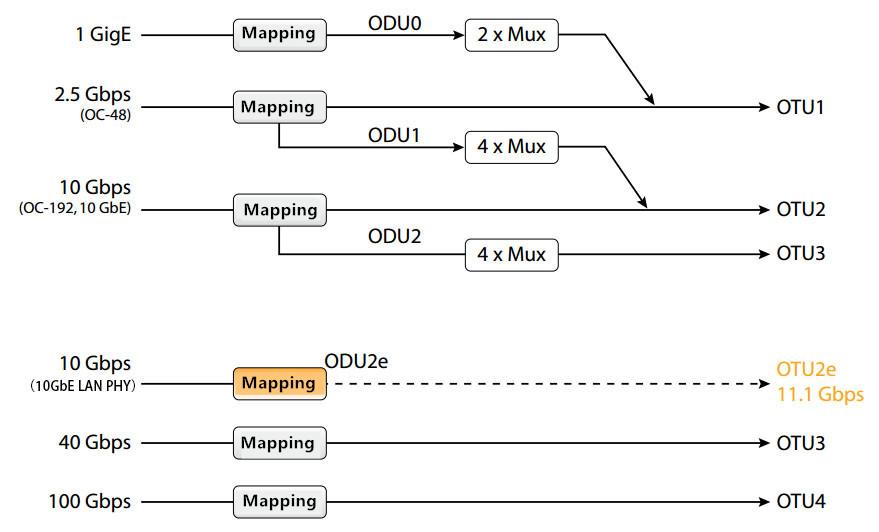- Related articles
- Optical Transceivers for Cisco WS-C2960+24PC-L Switch
- Optical Transceivers for Cisco SLM2024T-EU Switch
- All Cisco SFP-GE-S's information (List price, Specs, Datasheet PDF, Compatibility matrix)
- How to choose the fastest network card for Intel chipset server adapter?
- Applicable to 40GBASE-LRL4 Standard Optical Transceiver Models
- All Cisco ONS-SC+-10G-ER's information (List price, Specs, Datasheet PDF, Compatibility ma
- All Cisco ONS-SI-622-L1's information (List price, Specs, Datasheet PDF, Compatibility mat
- Optical Transceivers for Cisco WS-C2960X-24TS-L Switch
- Optical Transceivers for Cisco WS-CBS3110X-S Switch
- Optical Transceivers for Cisco SG500XG-8F8T-K9-G5 Switch

Introduction
The SONET / SDH transport network defines a set of rates and formats for transmitting optical signals over optical fibers, often referred to as optical synchronous digital transmission networks, often used as backbone networks for telecommunication networks. With the development of optical communication technology, SONET / SDH technology and WDM technology have been combined to realize the application of multiple SONET / SDH signals on the same fiber. Optical Transport Network (OTN) is based on wavelength division multiplexing technology, in the optical layer organization network transmission network, is considered the the next generation of backbone transport network after SONET / SDH transmission network. Compared with SONET / SDH transmission network, OTN has many advantages including completely transparent information, can be expanded, flexible reconfigurable, no electronic bottlenecks. This tutorial will detail OTN from both working principle and application.
What is OTN?
The concept of OTN is proposed by the International Telecommunication Union Telecommunication Standardization Department (ITU-T), which can solve the problems of traditional WDM network without wavelength / sub-wavelength service scheduling, weak networking capability and weak protection capability. From the technical point of view, OTN technology is a more effective inheritance and combination of the advantages of the existing SDH and WDM, while expanding the business needs to meet the needs of network transmission; From the device type point of view, OTN equipment is equivalent to SDH and WDM equipment integration as a device, while expanding the original equipment type of the advantages of the function.

The principle of OTN
OTN frames and SONET frames are very similar in structure and format. The OTN frame has three overheads: an optical transmission unit (OPU), an optical fiber data unit (ODU), and an optical transport unit (OTU). Among them, OPU directly carries the user service signal, has a certain frame structure of the most basic information structure, providing the customer signal mapping function; ODU is information structure for the OPU payload, mainly to provide customer signal digital encapsulation, OTN protection switch, Trace monitoring, general communication processing and other functions; OTU is information structure for the ODU payload, to provide forward error correction, optical layer protection, and monitoring functions. In addition, each OTN frame has a forward error correction function, so you can increase the optical signal to noise ratio of 4-6 dB.

The application of OTN
G.709 digital encapsulation technology was originally used to transmit 10 Gbps wavelength signal, its forward error correction function greatly improves the transmission performance, OTN overhead byte and standard frame structure are also conducive to network operation and maintenance management. Based on ITU-T G.709 OTN frame structure can support a variety of customer signal mapping and transparent transmission, such as SDH, ATM, Ethernet and so on. The ODT1 (2.5Gbit / s), ODU2 (10Gbit / s) and ODU3 (40Gbit / s), optical layer (ODG) Of the bandwidth of the particles, compared with SDH VC-12 / VC-4 scheduling particles, OTN reuse, cross and configuration of the particles significantly larger, high bandwidth data customer service adaptation and delivery efficiency significantly improved. The next figure is the basic schematic of the OTN mapping. A 2.5 Gbps signal (OC-48) is mapped to an OTU1 frame. Four 2.5 Gbps signals (i.e., 10 Gbps) are mapped into one OTU2 frame.

Conclusion
After years of development, OTN technology has matured, interface OTN SDH / SONET / WDM equipment has also made a lot of applications. As the best choice for the development of transmission network technology, it is expected that in the near future, OTN technology will be more widely used, as operators to create an excellent network platform, expand the business market preferred technology.





































































